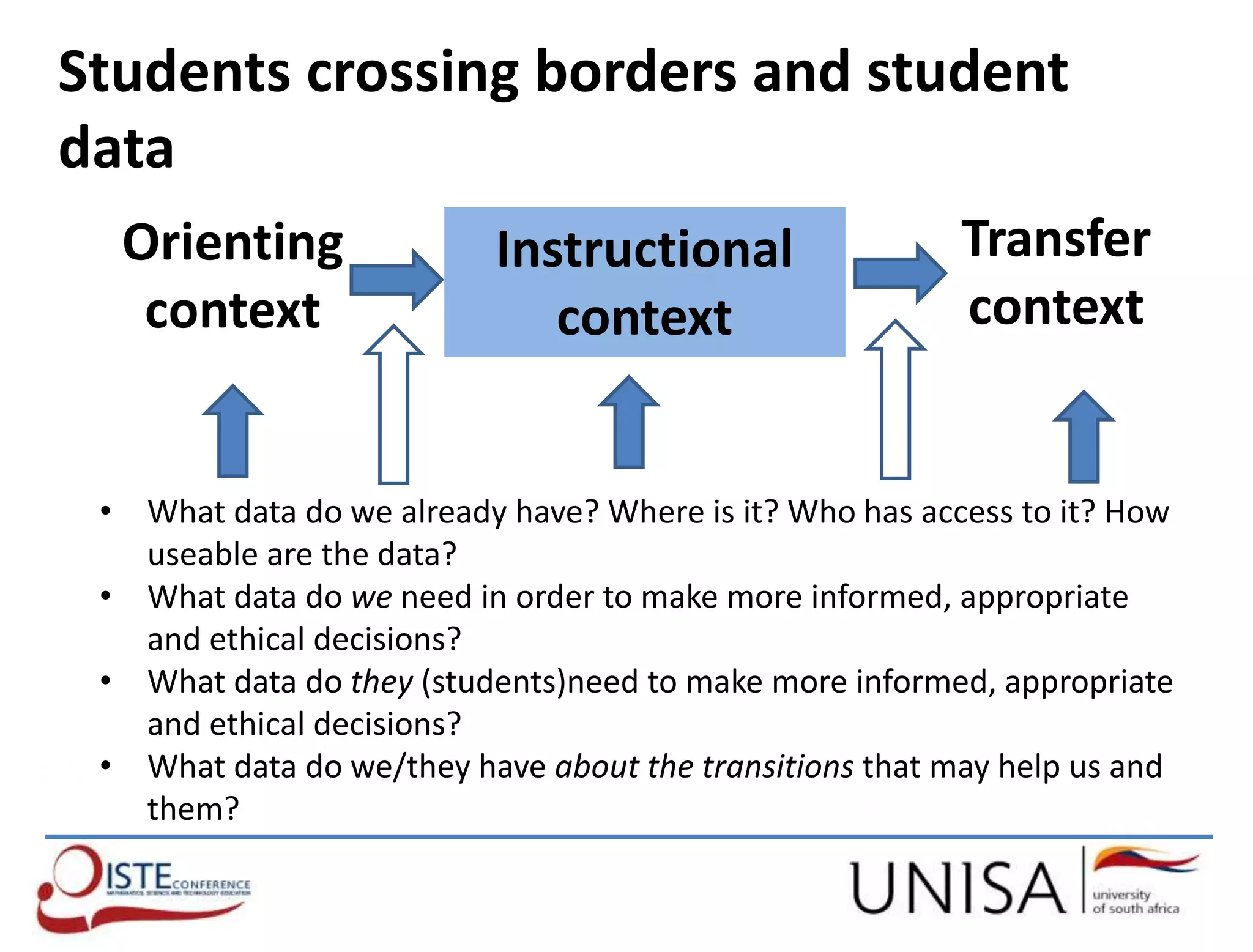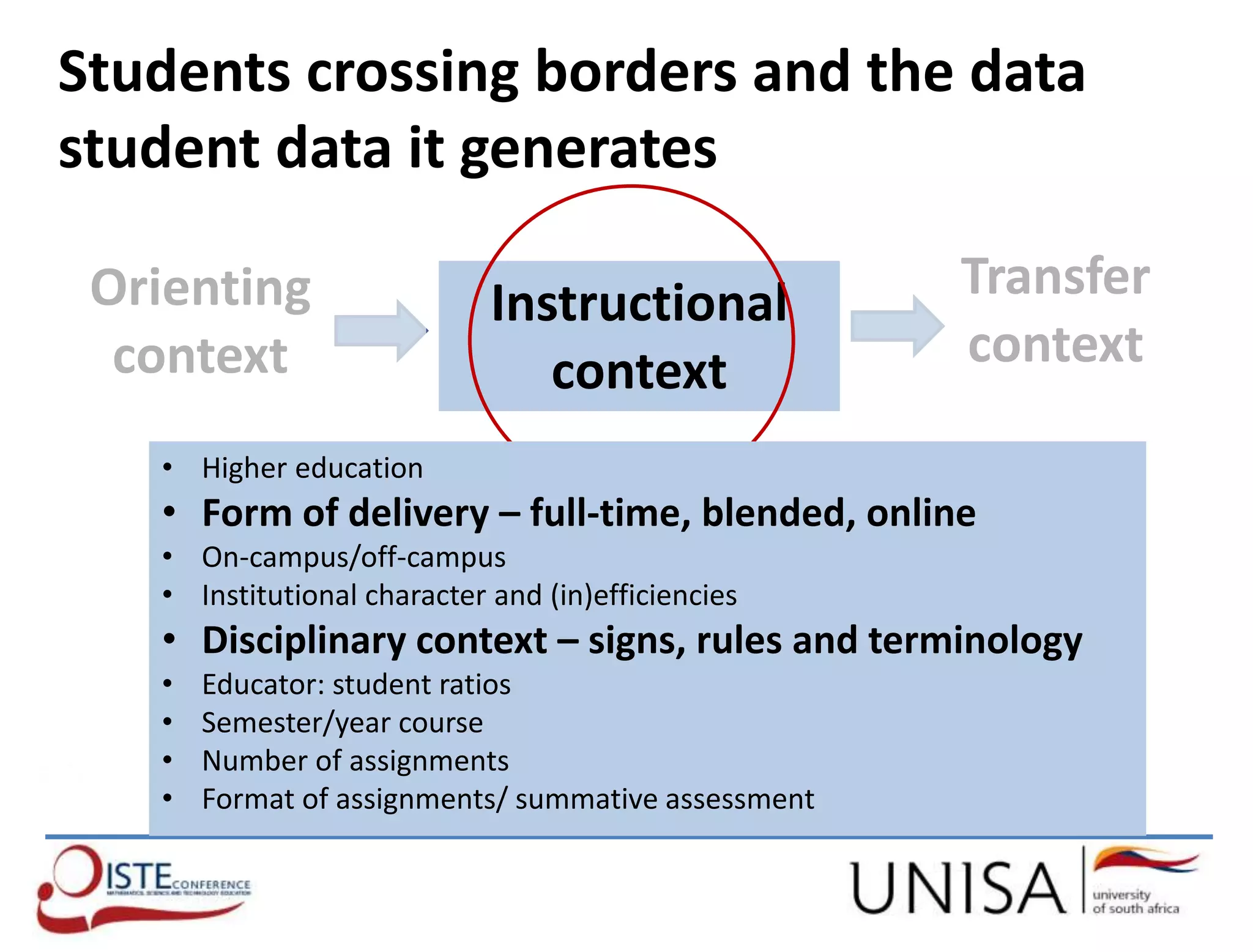Paul Prinsloo's keynote presentation discusses the crucial role of student data in enhancing teaching and learning in mathematics, science, and technology within higher education. It emphasizes understanding students' diverse backgrounds and the importance of data in informing pedagogical decisions and curriculum design. The presentation also highlights the increasing complexity of data collection and analysis, including ethical considerations and the impact of socio-economic factors on student success.



























![(1)
Humans
perform the
task
(2)
Task is
shared with
algorithms
(3)
Algorithms
perform task:
human
supervision
(4)
Algorithms
perform task:
no human
input
Seeing Yes or No? Yes or No? Yes or No? Yes or No?
Processing Yes or No? Yes or No? Yes or No? Yes or No?
Acting Yes or No? Yes or No? Yes or No? Yes or No?
Learning Yes or No? Yes or No? Yes or No? Yes or No?
Danaher, J. (2015). How might algorithms rule our lives? Mapping the logical space of algocracy. [Web log post]. Retrieved from
http://philosophicaldisquisitions.blogspot.com/2015/06/how-might-algorithms-rule-our-lives.html
Human-algorithm interaction in the collection, analysis and
use of student data](https://image.slidesharecdn.com/finalprinslooskukuza2018-181026114955/75/Mapping-teaching-and-learning-as-dis-location-re-location-the-role-of-student-data-28-2048.jpg)





























